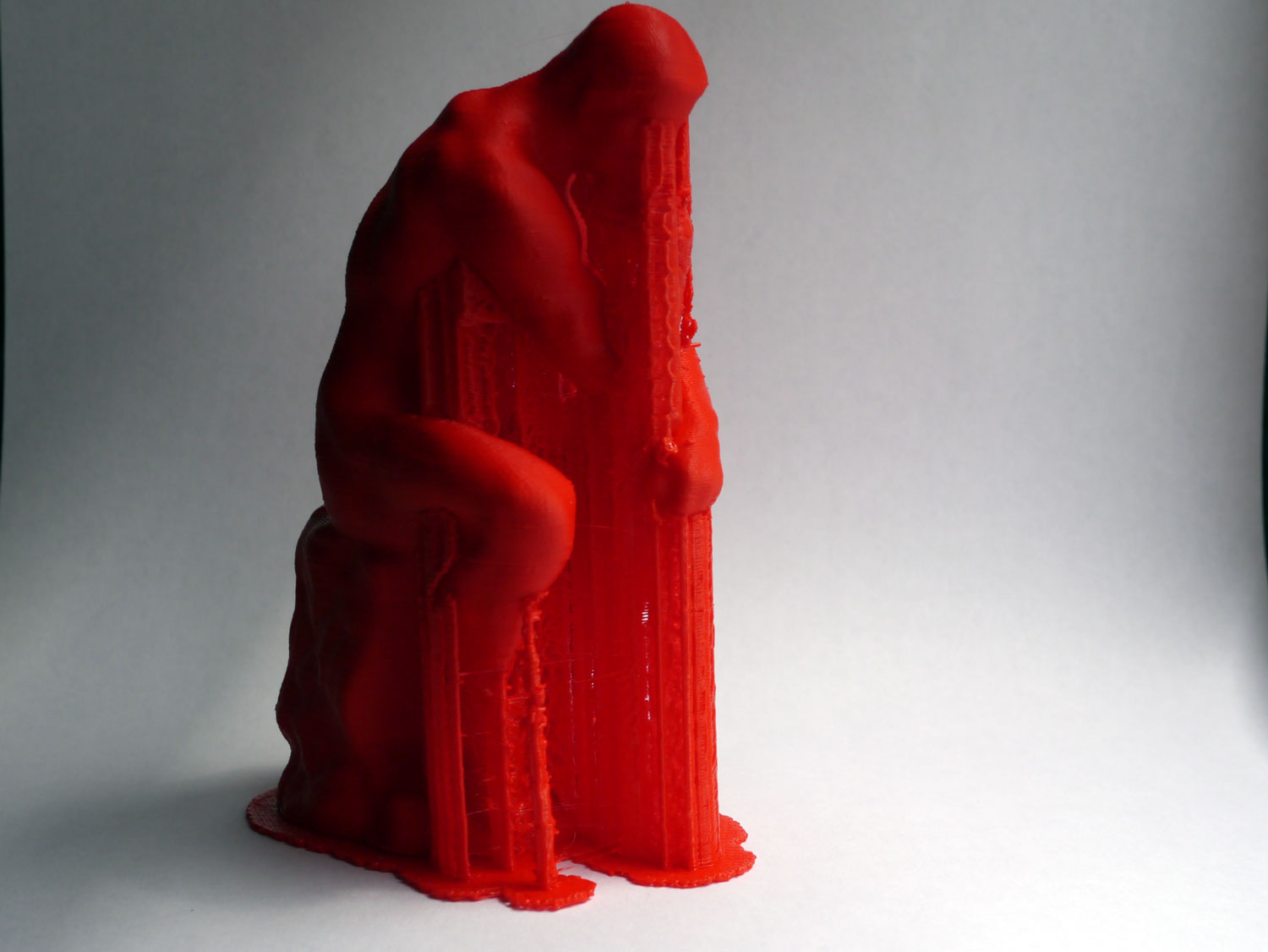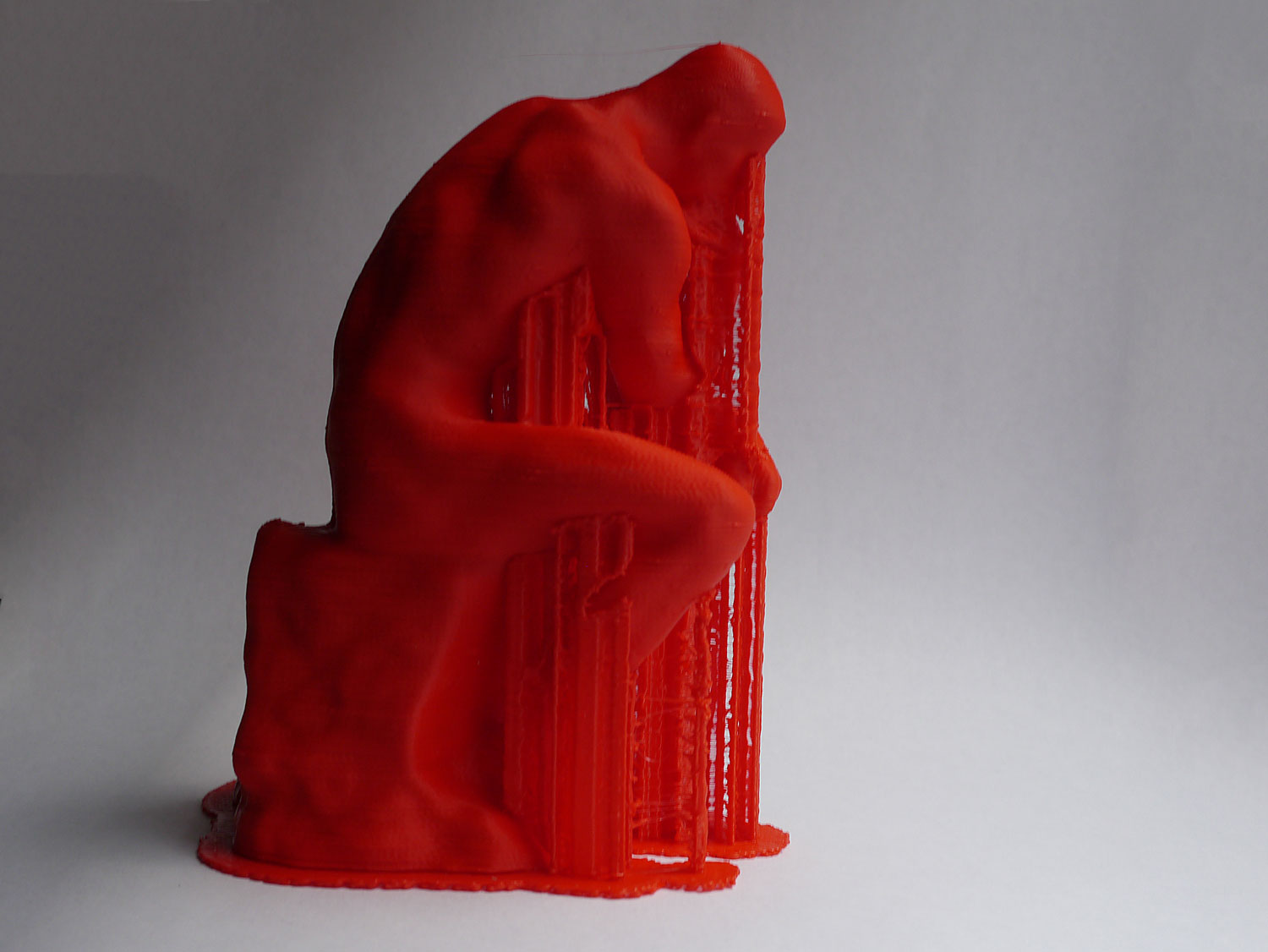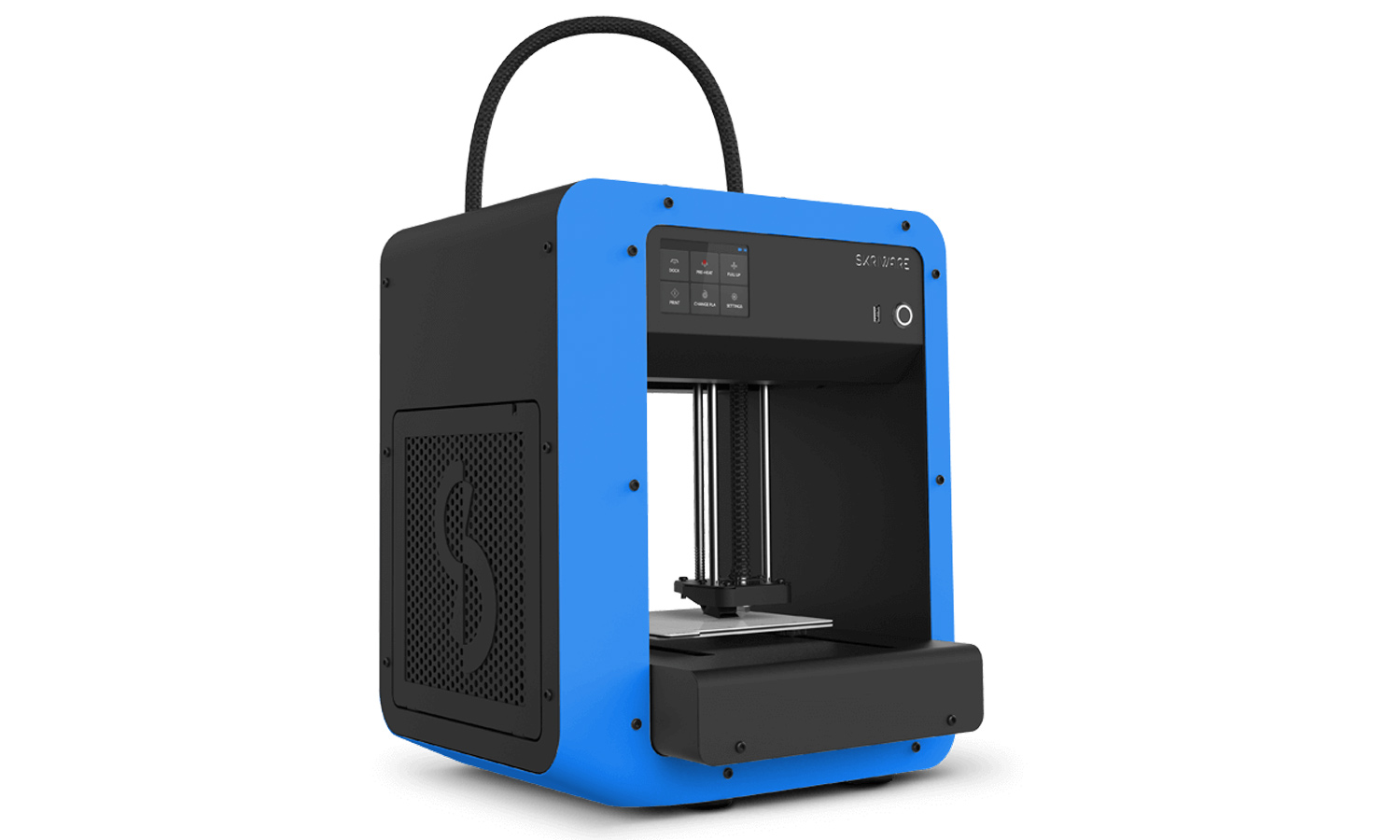Early Verdict
The Skriware 3D Printer is a well-built device, but its processing software isn't up to the job.
Pros
- +
Solidly built
- +
Great print quality
- +
Includes spare extruder
Cons
- -
Inconsistent performance
- -
Buggy printing software
- -
Limited to PLA filament
Why you can trust Tom's Guide
Skriware is a new name on the 3D printer scene. Hailing from Poland, the company has launched its first 3D printer, the eponymous Skriware. This $999 midrange FDM (filament deposition manufacturing) printer targets home users who want simple, hassle-free printing. (The $999 base model is available in white; other colors are available for an additional $99.) It falls short of that goal, largely because of problems with its software. It's a bit on the expensive side as well, compared with models like the XYZ da Vinci Mini at less than half the price.
Design: Clean, Practical and Easy to Use
The Skriware is an attractive printer, made out of an O-shaped metal shell that gives it a clean, industrial look. The body measures 17 x 15 x 13 inches, so it should fit on even a small desk. The filament reel (a standard 1.75mm reel that holds 1kg of material) fits under a panel on the left side, which keeps it out of the way.
A 3.5-inch LED touch screen on the front is the main way to control the Skriware, but the printer also comes with wired and wireless 2.4GHz Ethernet connections. A single USB port is next to the power switch, so you can print models from a USB thumb drive.
The Skriware's printhead is fairly small, moving left-right and up-down. The print bed moves forward and backward while printing, which does mean that the hot printhead and the moving parts are rather exposed: curious fingers could get squished or burned. In an unusual move, the company includes a spare brass extruder, the part of the printhead that squirts out the melted material to form the print. These parts do wear out with time, so it is nice to see a extra one included with the Skriware.
The print bed is interesting: The Skriware prints the model onto a square 6-inch wide removable plastic bed held in place with magnets. When the print is completed, you can just pull this bed off and remove the print, which is much easier than removing it from a fixed bed. Two of these beds come with the printer, so you can set another print going while you remove the first one.
Skriware's printer offers a printing volume of about 177 cubic inches — slightly smaller than similarly sized printers like the XYZ Da Vinci Mini, which offers 209 cubic inches. Still, that print volume is big enough for most purposes.
Print Materials: PLA Only
Because the Skriware's print bed isn't heated, the printer can handle PLA filament only. There are no restrictions on where you get your PLA from, though: The printer will work with any 1.75mm PLA filament on a standard 1Kg reel. Just note that Skriware's warranty doesn't cover damage caused by using third party filaments, though.
MORE: Your Guide to 3D Printing Materials
Setup: Manual Print Bed Leveling Required
The Skriware is pretty simple to set up: you just unbox it, remove the large amount of foam and packing tape, then plug the printer in and install the filament. You can then connect the Skriware to your Wi-Fi network or wired Ethernet and start printing.
The only cumbersome part of the process is leveling the print bed, which involves turning three screws under the print bed to adjust the gap between the print bed and printhead. While many modern printers do this automatically, the Skriware makes you do it manually.
To connect the Skriware to the online service that prepares the files, you create an account at Skrimarket.com and enter the printer serial number. The service then connects to the printer, ready to send the files to it for printing.
Interface: Meet Skrimarket
The Skriware printer is controlled through a combination of the touch-screen display and the Skrimarket online service. The touch-screen display is easy to read and use, presenting large buttons that allow you to control the printer and set prints running from a USB thumb drive.
Skrimarket is an online program where you can create, upload and process models, then send them directly to the printer. This allows you to build simple models with a series of straightforward editing tools, saving them for later use. (You can even sell them: Skrimarket offers a deal where you can sell your models and Skriware takes a 30 percent commission.)
When I uploaded two test models to the Skrimarket to print, I received an unhelpful and unspecific error message.
You can also upload 3D models from other sources; Skriware's website can handle G-Code, STL or OBJ files. That means you can grab a file from a source such as Thingiverse and upload it to your Skrimarket account for printing.
Print Process: Pretty Buggy
You prepare files for printing through Skrimarket, using the company's online software to scale your model and position it on the print bed. When everything is ready, you can set it to print, and the print file is sent straight to the printer. You don't need to stay connected while this is happening, and you can even set a print going remotely.

I did find a few issues with the print process. My test printer initially failed to connect to the Skrimarket until I raised the issue with Skriware, which put the blame on technical issues and fixed the problem remotely. The Skrimarket also failed to process two test models — our gears test model, which includes all of the parts for a set of planetary gears, and our geometric sculpture model.
When I uploaded these models to the Skrimarket to print, I received an unhelpful and unspecific error message, with Skrimarket refusing to even display my model.
Skriware points out that its printer can also work with other 3D slicing software, such as Cura. I could easily set up this open-source program to create 3D print files and print them from a USB thumb drive plugged into the printer. Still, that misses the point of the Skriware 3D printer, which is designed to make 3D printing easier and more convenient by doing the hard work for you; simply referring people to other, nonsupported solutions doesn't help the confused user.
Skriware told us that "our whole ecosystem is dedicated to helping beginners start their adventure with 3D printing. To fit their needs and process different kinds of prints, the slicer is set to universal settings and it may be unsuitable for very complex models. With that in mind, we are working on solutions that will give the users more options while keeping it as simple to use as possible."
Print Speed: Eventually Average
My testing also ran into some print time issues with the Skriware. Our Thinker test model usually takes between 5 and 10 hours to print, but a first attempt using Skrimarket took more than three days. Skriware blamed bugs in its slicing software, which resulted in the internal supports of the model printing much slower than they needed to.
Test prints of our Thinker statue looked very attractive, with smooth curves and accurate details on difficult parts like the shoulders and head.
I tried it again a few days later after Skriware had updated its online software, and the same Thinker model took a much more reasonable 6 hours and 11 minutes. That's a pretty average print speed for this model, though the da Vinci Mini took less than 4 hours to produce the same print at its Normal quality preset.
The Skrimarket processing software doesn't allow you to tweak the quality settings of the printer, so we were not able to judge the speed at different quality settings.
Print Quality: Very Good — When It Works
Despite the problems with the online Skrimarket software, the Skriware printer yielded some excellent quality 3D prints for one of the test models. Test prints of the Thinker statue looked very attractive, with smooth curves and accurate details on difficult parts like the shoulders and head. I noticed some occasional layer glitches, where a layer of the print was more visible than others in a horizontal band.

However, I couldn't print the other two models we use to assess print quality. Both our set of gears and our geometric sculpture model seemed to be too much for the Skrimarket processing system, as each produced an error message when we tried to upload and prepare them for printing.
Bottom Line
It's a shame that the Skriware 3D Printer couldn't reliably produce our test models, as the printer itself is well-designed and capable of turning out attractive prints. Although it is limited to printing in PLA, thoughtful touches like the multiple removable print beds and included spare nozzles would make it a compelling choice for heavy users.
At the moment, though, Skriware's limited and buggy online software is too much of a limitation. Skriware says that it's improving its Skrimarket processing software, but until then this contender is best avoided.
Richard Baguley has been working as a technology writer and journalist since 1993. As well as contributing to Tom's Guide, he writes for Cnet, T3, Wired and many other publications.

